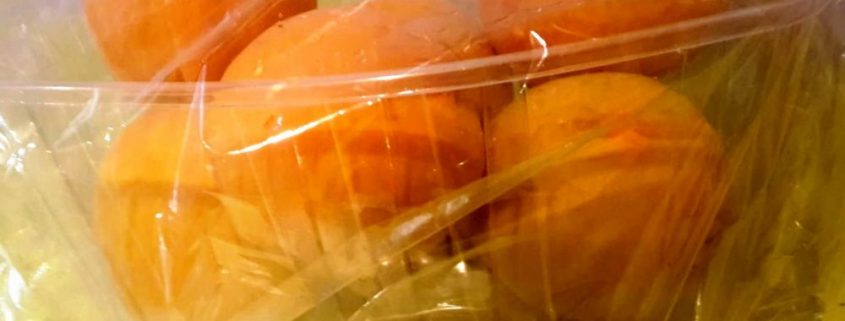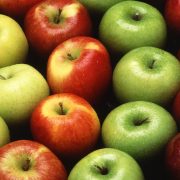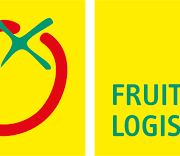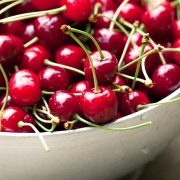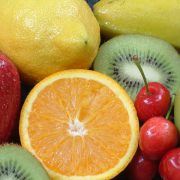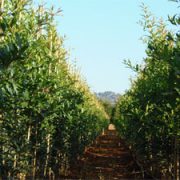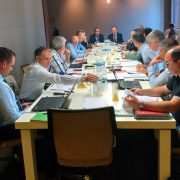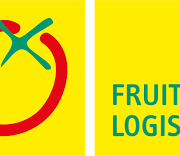Our fruit is a gift, what you pay for is plastic
By David Borda, Head of the COAG Sweet Fruit Sector
One more campaign – and there are already a few – fruit growers and fruit growers we are not getting profitability for our work and effort, in short, for our fruit. We have a macroeconomic sector that goes like a very well. Both the export, (grew by 20% in value from 2014 to 2018), and the value of production (has increased by 38% between 2013 and 2018, reaching more than € 10.3 billion, being the most relevant sector of all Spanish agriculture), or employment (with around 150,000 direct workers) … But the value does not reach the one who grows the fruit. The fruit chain does not generate value for the farmer, rather it destroys it, because they are making us disappear. A family farms, traditionally spearhead in the sector, lead us to ruin and we are replaced by large extensions and speculative investments, with another operating philosophy. This sector was characterized by an average age younger than the rest of agriculture. This is ceasing to be so. Young people do not want to enter. Profitability does not ensure the generational change and aggravates the problem of abandonment of the sector and depopulation of the rural environment.
Now, our fruit is a gift in a plastic or container. The consumer is what he ends up paying. It does not pay the costs of producing the fruit, but the costs and margins of all links, except those of the farmers. We have built a value chain in which the final price includes packaging, plastic, transport, handling, in short, the costs of all links in the chain and, of course, its margins, but does not include the value of the fruit Can you imagine paying the extras and having them give away the car?
In this 2019 campaign, the prices we are perceiving (in peach, 26% below the average of the 2013-2018 campaigns, according to the COAG IPOD), are the worst average quotes for farmers since 2013, except for 2017. While , the origin-destination margin has stood at 538% for peaches, clearly above the average of the last 5 campaigns (413%). We charge less but the chain absorbs more value.
It is clear that we must produce quality fruit (flavor, size, firmness …). Perfect, we know that. And we do it. Now, those who buy at home do not pay it. And as it is not paid, there is less and less quality and more backpack. “It’s what the market demands, friend.” Then, if the consumer stops eating fruit because what is in the linear is a horror … The whiting that bites its tail. Farmers are increasingly drowning and the resource is to produce more kilos with less costs, at the expense of quality. If there is a single pass to collect, it is done. Collection costs are reduced, which are not turkey mucus and have doubled in 10 years, and quality is lost, because the maturity point does not matter. This practice is spreading of large extensions and large companies that do not take care of quality and are looking for kilos at low cost. And this battle is lost against the productions of third countries.
We must value the fruit by itself so that the consumer can “appreciate it” when it arrives. To do this, many things have to change. The change must be profound and the first thing is to decide if we want an agriculture with farmers or an agriculture with large companies and employees in the field. We are clear: the family business, professional farmers want to continue producing fruit. Now, administrations should clarify and stop saying one thing and while putting the red carpet to large companies and the commercial sector.
In the field of concrete it is necessary to adopt legal measures that allow us to charge for the value we generate. There are many options but, for example, the chain law must go further and defend the prices of the weakest link, because our marketers at source are not able to respect our production costs against commercial distribution, which does not think about future sustainability of the chain, but only in its immediate profitability. It should also boost the harvest in green and not harvest, measures that have a greater and more agile effect on the market because the product does not reach the plant and does not exert a “pressure” effect to give it output, which results in the income of the producer for producing an increase in price by reducing the offer, but also for supporting a lower expense in the process. Finally, we have to organize at source, yes. But as much as we organize the distribution companies will always be less and have the pan by the handle. You have to regulate. There is no other.




